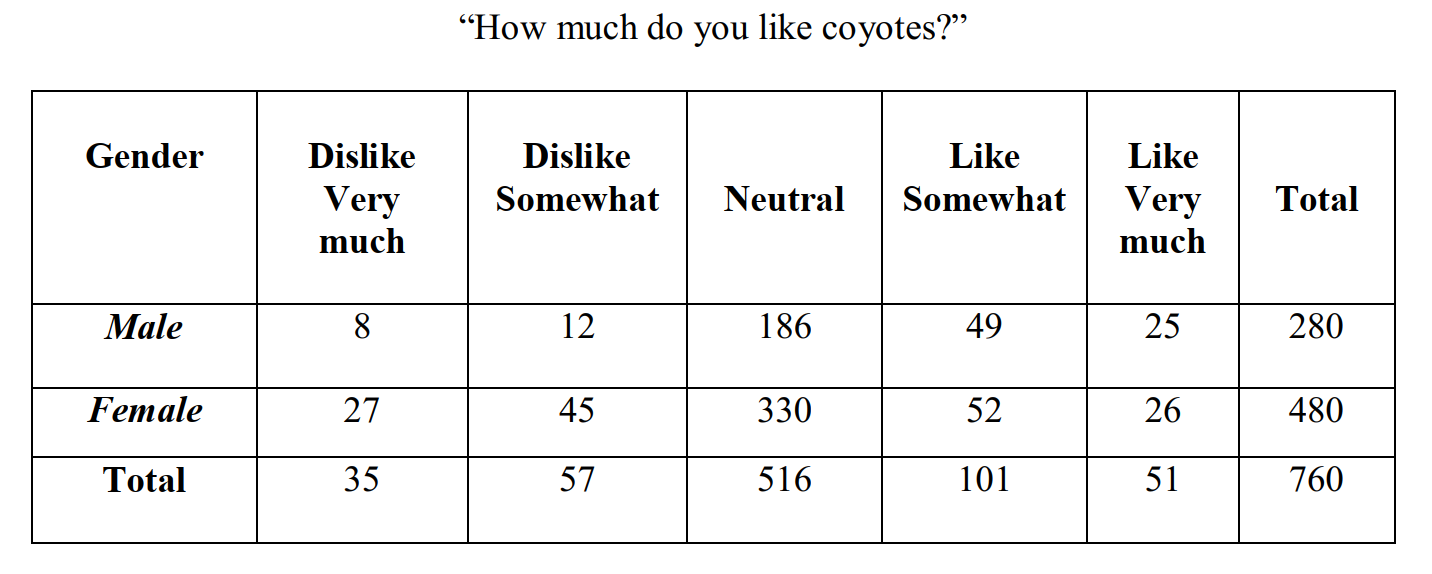Understanding attitudes of humans towards wildlife is an important step in learning how to work with people on wildlife issues. Coyotes have expanded their range throughout the continental United States, even in the Washington, DC area. The data below are from a survey of George Mason University undergraduate students.
Suppose a newspaper decides to select one of these students at random for an interview.
-What is the probability that the selected student is male, given that he likes coyotesvery much?
Definitions:
Constructive Confrontation
is a method of addressing conflicts in a positive way, aiming to find solutions through open dialogue and mutual respect.
Communication Barrier
Any obstacle that impedes the exchange of information between individuals or groups.
Ambushing
A communication strategy where a listener gathers information to use against the speaker, often seen in debates or arguments.
American Negotiators
Individuals from the United States involved in negotiation processes, who may exhibit certain culturally influenced styles and strategies such as direct communication and value-driven bargaining.
Q4: The black woodpecker is the second largest
Q23: Knowledge of where animals forage for food
Q24: Construct comparative box plots of the numbers
Q27: Calculate the values of these numerical summaries
Q28: An understanding of choices of habitat is
Q43: John Leeʹs savings account has a balance
Q64: <span class="ql-formula" data-value="[ 8 , \infty )"><span
Q109: $150 is invested quarterly for 8 years
Q144: December 8 for 240 days (the due
Q158: Jennifer has a 60-month fixed installment loan,